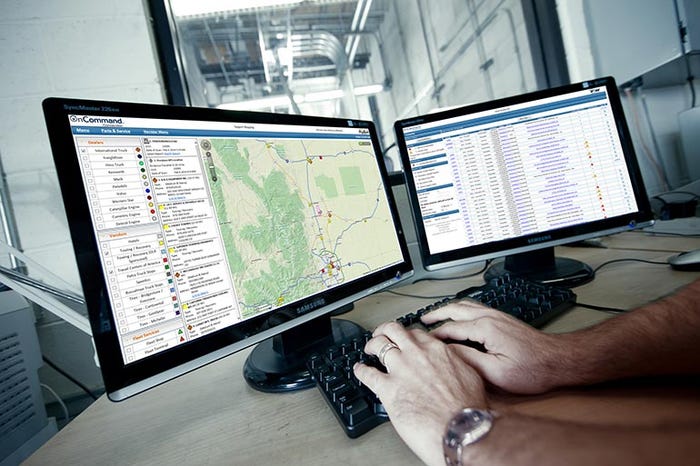Why Navistar’s OnCommand Connection Tech Is GroundbreakingWhy Navistar’s OnCommand Connection Tech Is Groundbreaking
The company’s CTO provides perspective on its fleet management tool.
June 22, 2018

The last thing a semi-truck driver or fleet owner wants is for a vehicle to need unscheduled maintenance. They can be time-consuming, leaving customers fuming that their shipment is late and truck drivers upset they are taking an unforeseen pay cut as their vehicle sits idle or is towed away. Such breakdowns are also growing more expensive — rising 20 percent from 2012 to 2016, comprising 18 percent of overall vehicle-based costs.
And yet such problems are relatively common. A typical truckload carrier suffered an average of one breakdown every 9,136 miles in the first quarter of 2018, based on data from the Truckload Vertical Benchmarking Study from American Trucking Associations’ Technology & Maintenance Council and FleetNet America.
One notable trailblazer in addressing the problem is Navistar, a manufacturer of commercial vehicles. Founded in 1902 as International Harvester Company with an agricultural focus, Navistar has focused on commercial vehicles for the past quarter-century. The company also recently became an Internet of Things pioneer, having connected thousands of its customers and hundreds of thousands of vehicles to its open telematics platform known as OnCommand Connection.

“We wanted to intervene as quickly as possible to ensure our customers were getting the highest level of uptime available,” said Ashish Bayas, Navistar’s chief technology officer.
Any vehicle, whether a semi-truck or a bus will showcase symptoms of a pending problem days or weeks before it causes unplanned downtime. OnCommand Connection can predict when such problems will arise and assign what the company terms a “repair advocate” to help diagnose the problem and coordinate a strategy to fix it as efficiently as possible, finding the nearest repair centers that can handle the job and ensure they can get the necessary components. “The dealership can make sure their workers have the skill sets and parts they need in advance,” Bayas explained. That’s a marked change in strategy than scheduled maintenance based on mileage intervals or the amount of time elapsed since the last service appointment.
The system enables fleet owners to not only monitor their vehicles but also monitor a given truck’s condition from a smartphone or tablet, allowing them to help coordinate predictive maintenance activities. And when a vehicle pulls into the shop, the system shares with the mechanics its history “so they know whether this is happening for the first time or was happening in the past,”’ Bayas explained. In addition, Navistar uses data gleaned from the platform for continuous feedback, enabling it to make design improvements to future generations of vehicles.
To build the OnCommand Connection platform, Navistar enlisted Cloudera to help it ingest and process data streaming from IoT-enabled sensors in vehicles and other data types including warranty information, traffic, vehicle history, geolocation and weather reports. “We can gather all this information from different sources within our network, consolidate it into one report quickly — it’s a matter of seconds,” Bayas said. “And we can provide this information to our subscribers in near real time.”
The platform also supports data from more than 20 telematics providers. Navistar uses Tableau for data visualization and SAS for predictive analytics, as well as open-source technologies like R and Python. “Because it is an ecosystem, it is not a one size fits all kind of thing,” said Bayas of the constellation of technologies it uses for data ingestion and processing.
Navistar has quickly expanded the number of vehicles that use the service in recent years. “ In 2015, we added around 70,000 VINs. In 2016, we added 95,000 VINs. We ended 2017 with around 340,000. Today, we are at 440,000 plus,” he said in a March interview with IoT Institute.
Last June, Navistar reported the OnCommand Connection program reduced maintenance cost and vehicle downtime by nearly 40 percent.
This month, the company announced that the OnCommand Connection telematics technology would be standard equipment in the United States and Canada on the company’s International LT Series, RH Series and LoneStar trucks with International or Cummins engines.
About the Author
You May Also Like






